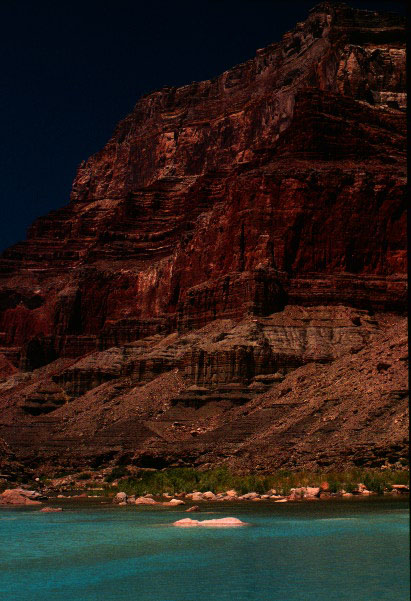 Contents
Contents 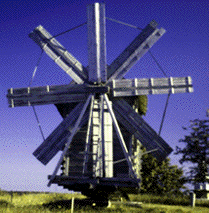
A Sense of Place, a Sense of Time
(New Haven: Yale University Press, 1994)
J. B. Jackson, 1909-1996.
THE SOUTHWEST
2, Seeing
New Mexico.
3, Pueblo
Dwellings and our own.
4, Church
or Plaza?
5, A
Mobile Home on the Range.
ENVIRONMENTS
6, Beyond
Wilderness.
7, In Favor
of Trees.
8, The
Past and Future Park.
9, Vernacular
Gardens.
10, Working at
Home.
11, A
Sense of Place, A Sense of Time.
TOWNS, CARS, & ROADS
12, Looking
Into Automobiles.
13, Truck City.
14, Roads
Belong in the Landscape.
The Little Colorado River's confluence with the main Colorado River in the Grand Canyon, Arizona.
Some characteristics of the work:
Jerusalem, the Temple Mount, site of Abraham's thwarted sacrifice of Isaac.
"The study of landscape history contributes its share to the new approach reminding us, among other things, that since the beginning of history humanity has modified and scarred the environment to convey some message, and that for our own peace of mind we should learn to differentiate among those wounds inflicted by greed and destructive fury, those that serve to keep us alive, and those which are inspired by a love of order and beauty, in obedience to some divine law."
J. B. Jackson, Preface, p. vii.
"Tragedy and injustice belong to the gods of space, historical fulfillment and justice belong to the God who acts in time and through time, uniting separated spaces of his universe in love."
Paul Tillich quoted by J. B. Jackson on p. 162.
| Summary | Chapters | Analysis | Themes | Vocabulary | Question | Observations |
"The study of landscape history contributes its share to the new approach by reminding us, . . . . that since the beginning of history humanity has modified and scarred the environment to convey some message. . . "
He views the role of architecture in defining places and the replacement of architectural dominance in delineating these common spaces we have been recreating since the colonial period and before.
"The role of architecture and man-made forms in creating a new civilized landscape."
p. viii.
He attempts in the close of his forty year career and a few years before his death to come to terms with the power, range, depth and persistent influences of contemporary technology as manifest in automotive and aerospace engineering. He does this by seeing these forms of engineering as instruments that both transform actual topographical spaces and alter our perspectives on the quality of landscapes in these identifiable places and their adjacent terrains.
| Summary | Chapters | Analysis | Themes | Vocabulary | Question | Observations |
![]()
Three very different means of getting at place, time, architecture and technology:
Martha's Vineyard, Massachusetts; originally a Gospel retreat camp.
He identifies the region above and adjacent to the Rio Grande valley as the oldest inhabited area of North America coinciding with the Anasazi culture area of the Great Basin and Sonoran deserts.
"Some ancient house types are eight or nine hundred years old, and how they were used is still not entirely understood. Chaco Canyon, the largest archaeological site in the United States, is from that point of view the greatest of mysteries."
Pueblo Bonito, Chaco Canyon, New Mexico; originally an extensive habitations for celestial navigation .
p. 53.
He contrasts sacred areas with vernacular, or indigenous places.
Machu Picchu, is a city 2,430 meters high in Peruvian Andes, South America; originally an extensive drainage system serviced this 32,500 hectare inhabited expanse. World Heritage Site.
View of Hannibal, Missouri in the period of the nineteenth century before railroads.
"A flexible and frequently shifting pattern of streets and spaces, adjusted to new real estate values and an increased traffic flow, becomes general: residential quarters, instead of grouping around the business section, tend to move out to where the immediate future is more predictable."
p. 156.
"Out of a ruin a new symbol emerges, and a landscape finds form, and comes alive."
The Great pyramid complex of Cheops at Giza, Egypt. JVS. 1989.
p. ix.
His three means are to focus sequentially on:
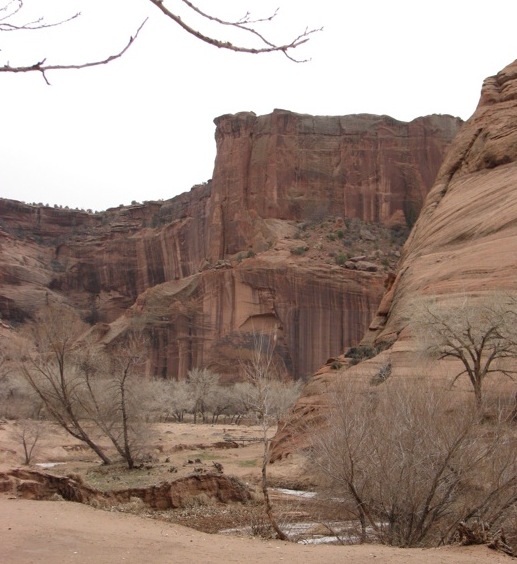 Place
as Southwest as a high country geography, with an arid climate, characterized
by a desert biome where the growing season is short and based on snow melting
and low summer rainfall patterns. Where historically prolonged drought in the
12th and 13th centuries may have ended Anasazi cultural hegemony over the region. He contrasts this desert area with the High Plains and its historical contributions to widespread national values with regards to landscapes, real estate, roads, and civic spaces.
Place
as Southwest as a high country geography, with an arid climate, characterized
by a desert biome where the growing season is short and based on snow melting
and low summer rainfall patterns. Where historically prolonged drought in the
12th and 13th centuries may have ended Anasazi cultural hegemony over the region. He contrasts this desert area with the High Plains and its historical contributions to widespread national values with regards to landscapes, real estate, roads, and civic spaces.
Time as Environments (places in a succession of periodic recreations are actually a palimpsest of human activities across the landscape) noting today that "The road generates its own patterns of movement, settlement and work without so far producing its own kind of landscape beauty or its own sense of place."
p. viii.
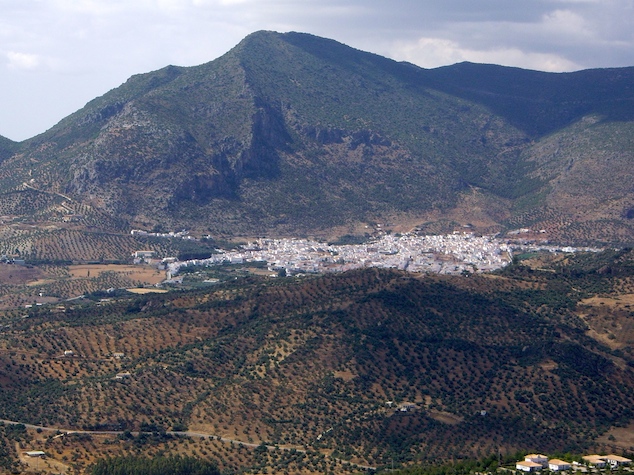 A village in Andalusia, Spain is an example of settled terrain.
A village in Andalusia, Spain is an example of settled terrain.
Objects as hamlets, villages, towns, cars, railways, & roads, which are actually examples of the oikumene, or the elements in a settled terrain. They are accompanied by vehicles, byways, alleys, walls, fences, and structures.
The automobile, trucks and buses transformed  the nineteenth century city in both the scale and extensive areas including the location of its defining objects or delineating features such as parking lots, service stations, street lighting and traffic signals.
the nineteenth century city in both the scale and extensive areas including the location of its defining objects or delineating features such as parking lots, service stations, street lighting and traffic signals.
"parts of the city dominated by industrial traffic, and into the railroad-oriented towns of the High Plains."
"The road generates its own patterns of movement and settlement and work without so far producing its own kind of landscape beauty or its own sense of place."
p. viii.
What we were:
Antebellum Richmond (left) and St. Louis (right) depicted by George Catlin, in the 1830s.
An analysis is divided into five queries.
He is a landscape historian; a cultural geographer by training. He was founder, editor, and publisher of Landscape magazine.
He wants his readers to understand the serious void in our aesthetic, historical, and rational sensitivities when applied to comprehending our surroundings, in particular, and geography, in general
The Middle ages and Renaissance to now, but JBJ argues that the passage of time really dictates how we understand the importance of places.
"I have a theory that about four or five centuries ago, during the Renaissance, the Western world learned how to organize spaces we lived and worked in so that they would achieve what appeared to be the most efficient, the most enduring, the most beautiful design: spaces in the house, in the garden, on the farm, in towns and cities, even spaces which were whole nations or empires."p. 6.
Place as partially determined by topography, occupation, access, & segregated spaces, but also by time.
His focus is the Indo-European world as it impacts the indigenous creations of the Native American farmers in the Anasazi culture area and desert biome and of American life on the High Plains of the great West.
He uses a dialectical approach to convey the meaning of useful and abusive intrusions into the landscape as the substrate of our intellect and emotions.
Dialectical approach means a method by which we use opposition to determine the veracity of statements made. Verity arises from a sort of confrontation between opposites: such as the Far East and the Far West; if ideas about landscape changes exist in both very different culture areas as China and the American frontier, then there may be some elements in common we need to remember when arguing about how humans use or revere places
| Summary | Chapters | Analysis | Themes | Vocabulary | Question | Observations |
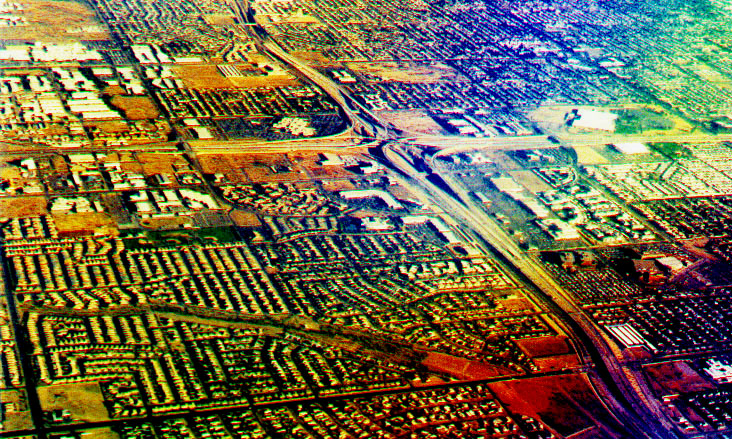 |
 |
Phoenix metropolitan area, 2003 |
Denver metropolitan area, 1993 |
Rio Grande Valley south of Albuquerque, New Mexico.
In Three Parts, a Chapter by Chapter discussion of Jackson's key and memorable ideas
"the human use and abuse of the earth and its resources"
vii
South African township in the Drakensburg mountains.
He characterizes "environmentalism" in its radical form is akin to "cultural anarchy" though it betrays both an awareness of cosmic order but is formulated as if it were a narrow, if not intolerant, heretical church dogma that cannot last.
Jackson counters that "that since the beginning of history humanity has modified and scarred the environment to convey some message."
* Americans are of two minds as to how we ought to live – See, p. 157.
He suggests instead that we must "differentiate among those wounds inflicted by greed and destructive fury, those which serve to keep us alive, and those which are inspired by a love of order and beauty, in obedience to some divine law."
He insists that the human acts of transforming places are "Signs of our sense of responsibility for the survival of the earth and its people."
p. viii.
Looking from the Louvre Palace in Paris due west across the Paris Meridian, of longitude,a world axis.
"all serve as symbols; symbols of what we have done that is wrong or of what is appropriate and right."
"Much of our contemporary American landscape can no longer be seen as a composition of well defined individual spaces --farms, counties, states territories and ecological regions -- but a zones of influence and control of roads, streets, highways: arteries which dominate and nourish and hold a landscape together and provide it with instant accessibility."
¶ 2, pp. viii, and Gardens, pp. l 12-17.
"rediscover the role of architecture and man-made forms in creating a new civilized landscape....[is] essentially a question of rediscovering symbols and believing in them..."
"Out of a ruin a new symbol emerges, and a landscape finds form and comes alive."
ix
| Summary | Chapters | Analysis | Themes | Vocabulary | Question | Observations |
Coming to terms with technology as the means to construct spaces and as an instrument to change our
perspective about what is beautiful and useful about landscapes.

The question which insists on an answer is, "What kind of small or local community can we hope to have?"
"a kind of sodality based on shared uses of the street or road or shared routines."
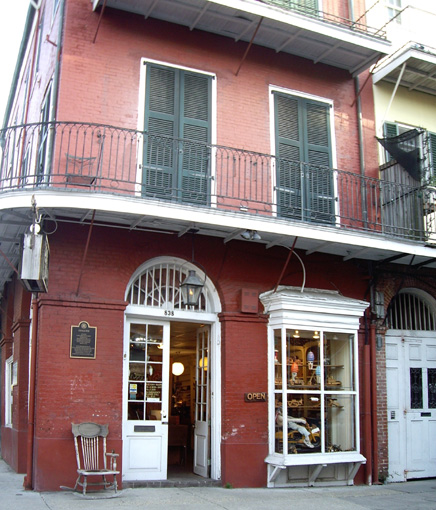
The oldest extant building in New Orleans French Quarter.
| Summary | Chapters | Analysis | Themes | Vocabulary | Question | Observations |
Oldest inhabited area of North America above the Rio Grande is the Anasazi culture area of the Great Basin and Sonoran deserts.
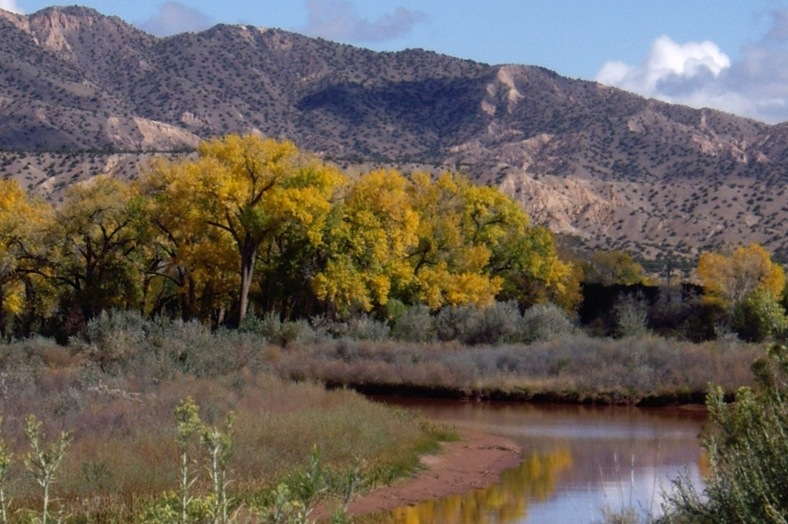
The Chama river valley in northern New Mexico.
"It is not easy in this landscape to separate the role of man from the role of nature."
It simply tells us that there is another way of measuring time and that the present is, in fact, an enormous interval in which even the newest of man-made structures are contemporary with the primeval."
17
"farming meant irrigation,"
"Each village devised its own communal irrigation system."
19
| Summary | Chapters | Analysis | Themes | Vocabulary | Question | Observations |
3,
Pueblo
Dwellings and our own
The Hopi villages of Arizona survive on less than eleven inches [of rainfall].
Site of Anasazi peoples referred to as "Pueblos" by the Spanish
chroniclers because they lived in towns or puebla.
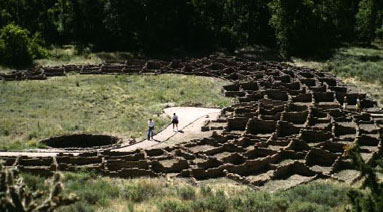
Bandolier National Monument, protected under the Antiquities Act of 1906.
"For all its common environmental characteristics, the area
has enormous diversity."
| Summary | Chapters | Analysis | Themes | Vocabulary | Question | Observations |
Puddled or puddling method of Adobe construction of the pre-Columbian Native American means of building is contrasted with the Spanish method of clay based construction.
"The church was a particularly fearsome example of adobe
brick architecture, not only because 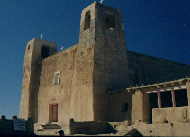 of
its monstrous size and permanence, but also because people were compelled to
enter its labyrinthine rooms at regular intervals and for a prescribed length
of time."
of
its monstrous size and permanence, but also because people were compelled to
enter its labyrinthine rooms at regular intervals and for a prescribed length
of time."
45
"For the Pueblo Indian, the really essential lived-in spaces are those found in the village: the plaza, and alleys and garden.
46
Acoma pueblo, or the "sky city" as it was called by the Spanish is the site of the Church photographed here which is the largest adobe construction in North America.
One of the curious blending of indigenous beliefs and the masque of Roman Catholicism in the southwest, not mentioned by the author is the tradition of healing earth as experienced by pilgrims to Chimayo, N.M.
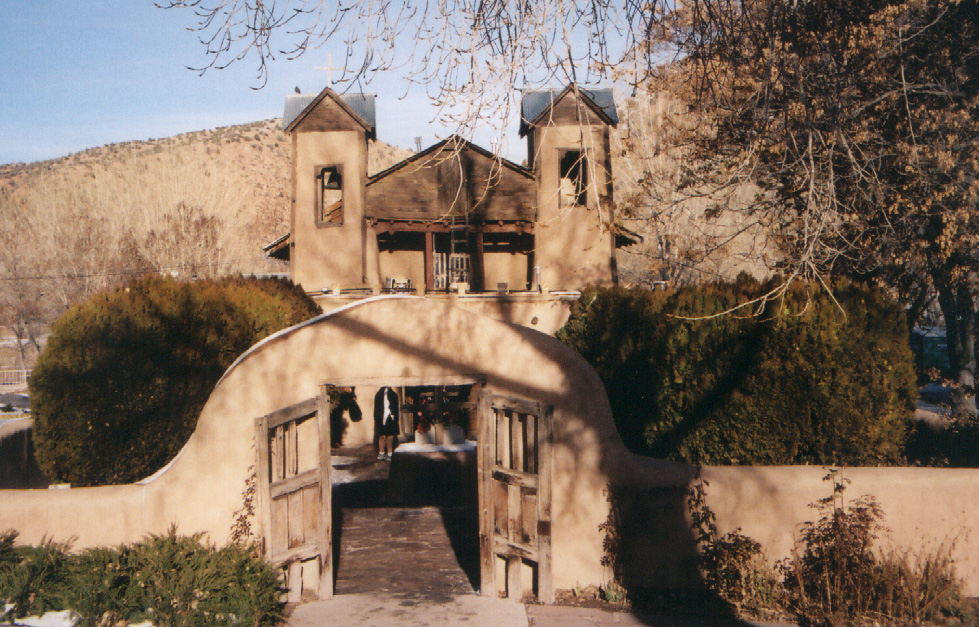 Tsimayo in Native Indian, or Chimayo in English,is the name of
the place that was a Tewa cultural site of great medicinal significance. It
is one of the few sites today of pilgrimage in North America, for Roman Catholics.
Tsimayo in Native Indian, or Chimayo in English,is the name of
the place that was a Tewa cultural site of great medicinal significance. It
is one of the few sites today of pilgrimage in North America, for Roman Catholics.
Chimayo lies on the high road to Taos, north
from Santa Fe near the dependable flow of Truchas Creek.
Contrast of Pueblos dances and Iberian ritual:
"--the traditional dances, endlessly repetitive and without climax, whether in time or in space of the plaza, were again performed in the open."
47
"All elements of celebration are present: all the symbols of order and reverence and undying love of this particular time, this particular place.
| Summary | Chapters | Analysis | Themes | Vocabulary | Question | Observations |
More American families may live in mobile homes than any other
type of dwelling, for instance drive State Road 17 to Lake Wales and count the
number of trailer homes you see.
"They had degenerated into rural slums of a very abject kind. Fields had reverted to second growth, houses were in decay, roads and irrigation ditches choked with rubbish and abandoned cars."
57
"You can find a squalor as hopeless as anywhere else in the United States."
58
"Now, two generations later, America has more trailers than ever before."
59
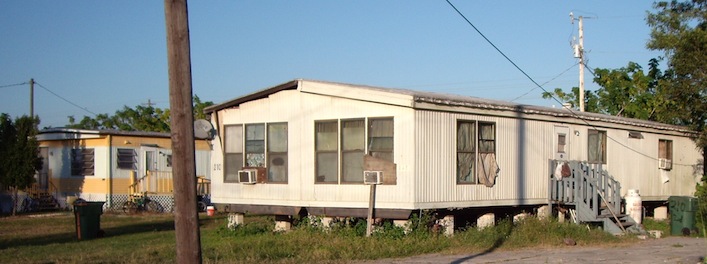
"To begin with the trailer is an industrial product, mass-produced, low-cost, and disposable."
"I shill think it is the most practical low cost dwelling we have, and that it is well adapted to a way of life that is becoming increasingly common in both rural and urban America."
62
The vernacular dwelling and the vernacular space it encompasses making it part and parcel of its surroundings.
67
| Summary | Chapters | Analysis | Themes | Vocabulary | Question | Observations |
A portrait of New York City in the 1830s with 200,000 residents still tied by rivers to the hinterlands and countryside. The view is from Weehauken from the westside shore of the Hudson River looking across and out over lower New York Bay. Seen here the "narrows" is in the far distance from these heights of eastern New Jersey.
The identifiable scale of the human transformation of Manhattan in early industrial America is evident but, as yet, subordinate to the topographical features in this riverside landscape.
Also evident is the proximity of the wooded or forested terrain to the Hudson River on the east Jersey shoreline framing Manhattan as one of many of the islands in this busy estuary.
In 1840's America, before the railroads this view of Manhattan reveals that topography and vegetation cover was still dominant in defining the place despite the romance depicted in this virtually bucolic scenery looking from northwest to southeast.
73
An area outside ( in Latin fores ) the realm of customary law.
| Summary | Chapters | Analysis | Themes | Vocabulary | Question | Observations |
Trees: "I continue to plant them when and where I can."
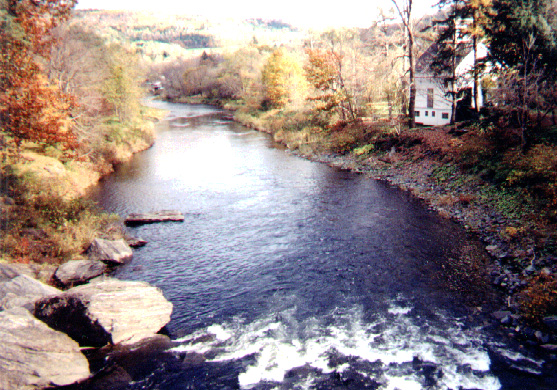
"What geographers call the Atlantic landscape stretches across northwestern Europe,...And in the course of the last three centuries it has been transplanted to Canada ...And the United States. It can be thought of as a gradual creation of those Indo-European migrants who came out of Asia some seven thousand years ago with their livestock ...And who eventually occupied all of Europe."
95
In Germany a set number of Walnut trees were required prior to ones ability to marry, John Evelyn in Silva, in the 17th Century, suggested iron making was leading to deforestation.
97
| Summary | Chapters | Analysis | Themes | Vocabulary | Question | Observations |
![]()
8, The
Past . . . And Future Park?
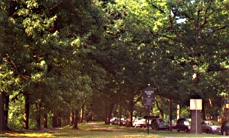
A photograph (2002, J.V. Siry) of a portion of Frederick Law Olmsted Sr.'s "Green Necklace" in Jamaica Plain. It is a portion of a larger urban park ...And parkway design where Boston ...And Brookline Massachusetts share a common boundary.
"In every city, in every town, even in every village
in America,...I expect to find ...And outdoor recreation area, or what is usually
called a park."
"In terms of greenery ...And design, no such space existed in ancient
Greece or in Rome, ...And it first appeared in European towns not Much earlier
than three centuries ago."
"... for such a vague purpose as recreation."
107
| Summary | Chapters | Analysis | Themes | Vocabulary | Question | Observations |
"We enjoy gardening as a kind of therapy."
121
"our own domestic plants have a different relation to their environment."
Our gardening is derived from the Russian ...And northern European traditions.
"The word garden, like the Latin hortus, derives from an Indo-Germanic root meaning fence or enclosure."
"Gardens teach us more than we are aware of."
There caretakers learned "a new sense of time."
123
| Summary | Chapters | Analysis | Themes | Vocabulary | Question | Observations |
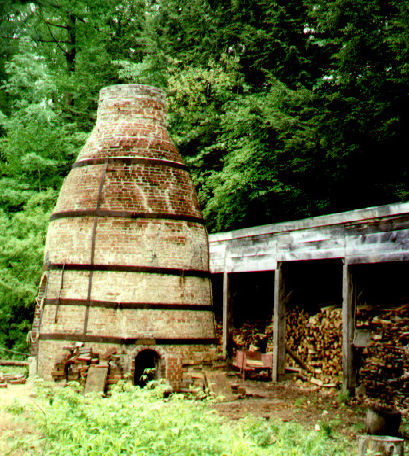 10, Working
at Home
10, Working
at Home
" a mental ...And spiritual condition" of being "at home." in a particular locale.
137
Colonial relationship between home ...And cottage industry kept alive in New England villages despite mechanization.
141
Class ...And prestige led to a separation of work
from home among the wealthy classes ...And was later imposed on mono crop agricultural
labor and factory labor as village life was eclipsed by company towns and plantations.
Limekiln in the Cumberland Gap of the Great Smoky Mountains
| Summary | Chapters | Analysis | Themes | Vocabulary | Question | Observations |
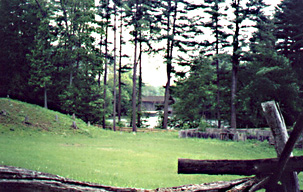 The chapter distinguishes between repetitive monotony and distinctively picturesque qualities.
The chapter distinguishes between repetitive monotony and distinctively picturesque qualities.
He poses two definitions of "a sense of place," but with a caveat about a loss of meaning.
"They believe that a sense of place comes from being in an unusual composition of spaces and forms -- natural or man-made."
"European individuality and the idea of two opposing views of place
He defines "a sense of place;" as both:
"It is by own belief that a sense of place is something that we ourselves create in the course of time."
He associates this sense of place with a feeling of homey familiarity; "It is the result of habit or custom."
By contrast he notes that "others disagree."
"They believe a sense of place comes from our response to features that are already there – either a beautiful natural setting or well-designed architecture."
The term is used by architects "injecting life and design into the decaying central city . . ."
151
"The sense of place is reinforced by what might be called a sense of recurring events."
"this expensive facelifting affected the rest of the city very little."
Not the cluster of magnificent forms and spaces; it is the long and empty view," of traffic lights . . . leading to an interstate
"The highway never seems to end"
152
"Familiarity makes you feel everywhere at home. A sense of time makes you gradually increase your speed."
152-153
"this all-pervading sameness is by an large the product of the grid –"
"the impact of the grid on a part of the country . . .The High Plains."
153


"where hundreds of thousands of buffalo grazed on the expanse of short grass.
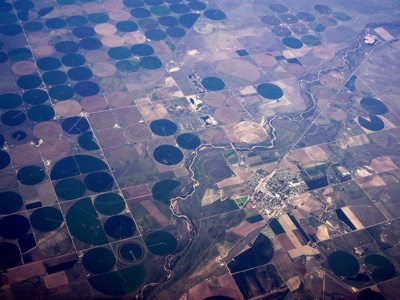
The round fields,. . . suggest the same liking for simple geometrical forms, which can be extremely handsome."
Grid "Space rather than land is what the settlers bought"
154
"Freedom from tradition and freedom from topographical constraints"
154-155
Reads "less like an account of pioneer farming than of endless land speculation."
155
"A flexible and frequently shifting pattern of streets and spaces, adjusted to new real estate values and an increased traffic flow, becomes general: residential quarters, instead of grouping around the business section, tend to move out to where the immediate future is more predictable."
p. 156.
He equates the freedom to move and to use space and says that these values "determined and still determines" much of the planning and architectural design throughout the West."
" 'Sense of place' is a much used expression, chiefly by architects but taken over by urban planners and interior decorators and the promoters of condominiums, so that it now means very little."
"It is an awkward and ambiguous translation of the Latin term genius loci.
"Americans are of two minds as to how we ought to live."
p. 157.
"Our modern culture rejected the notion of a divine or supernatural presence, and in the eighteenth century the Latin phrase was usually translated as 'the genius of place,' meaning its influence."
p. 157-158.
"describe:
the atmosphere to a place,
the quality of its environment."
"... we recognize that certain localities have an attraction which gives us a certain indefinable sense of well-being and which we want to return to again and again."
p. 158.
"... they are cherished because they are embedded in the everyday world around u and easily accessible, but at the same time are distinct from that world."
p. 158.
"... all of these have those qualities I associate with a sense of place: a lively awareness of the familiar environment, a ritual repetition, a sense of fellowship based on a shared experience"
". . . I'm inclined to believe that the average American still associates a sense of place not so much with architecture or a monument or a designed space as with some event, some daily or weekly or seasonal occurrence which we look forward to or remember. . . ."
p. 159.
"That is why we are more and more aware of time, and of the rhythm of the community. It is our sense of time, our sense of ritual, which in the long run creates our sense of place, and of community."
Hidden Rhythm's by Eviatar Zerubavel (1981) "describes as the sociology of time: 'the sociotemporal order which regulates the lives of social entities such as families, professional groups, religious communities complex organizations, or even entire nations.'
"There is no need to dwell on the ever-increasing importance of mechanical time in modern America with our insistence on schedules, programs, timetables, and the automatic recurrence of events – not only in the workplace but in social life and celebrations."
p. 160.
" . . . be reminded that this reverence for the clock and the calendar has robbed much social intercourse of its spontaneity and has in fact relegated place and a sense of place to a subordinate position in our lives."
p. 160-161.
On the High Plains for example, he argues that "two factors contributed to an early shift from sense of place to sense of time in the organization of landscape:
"the advent of the railroad with its periodicity. . .
. . . second, the almost total absence of topographical landmarks."
p. 161.
he insists that Eviatar Zerubavel (1981) argues convincingly that time is the arbiter of contemporary values and "A temporal order that is shared by a social group and is unique to it" must be documented.
p. 161.
That is because ". . . time seems to function a a segmenting principle; it helps segregate the private and the public spheres of life from one another."
" . . .what we actually share is a sense of time."
Jackson, then without summary, quotes Paul Tillich (extensive excerpt) to conclude that:
"This is the reason for the adoration of earth and soil, not of soil generally but of this special soil, and not of earth generally but of divine powers connected with this special section of earth. . . . "
p. 162.
| Summary | Chapters | Analysis | Themes | Vocabulary | Question | Observations |
The car and truck may be seen as essential, symbolic, automatically operational and a love object for many modern people.
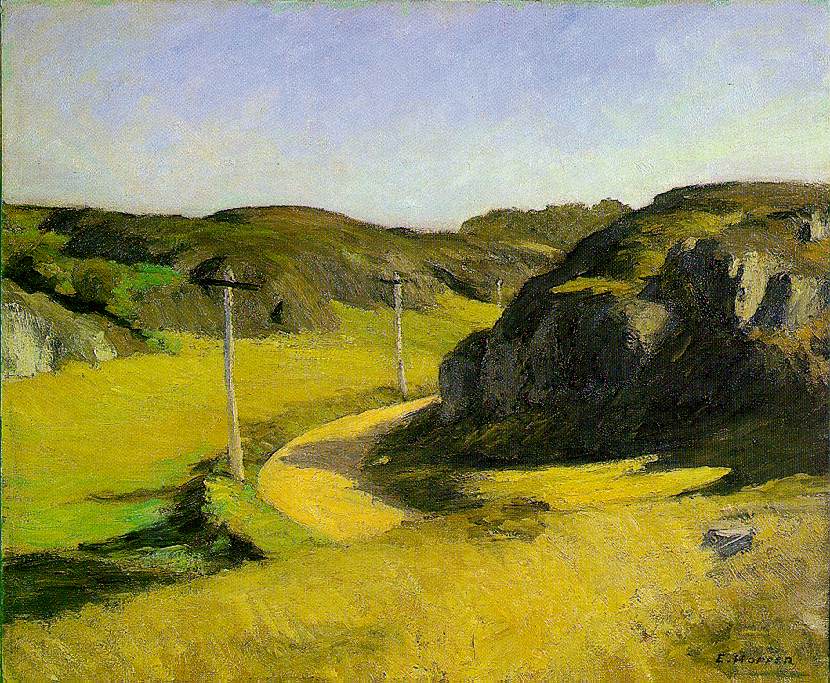 Edward Hopper's painting of a highway in Maine speaks of the automotive influence even when not depicted or unseen around the bend.
Edward Hopper's painting of a highway in Maine speaks of the automotive influence even when not depicted or unseen around the bend.
The auto oriented world.
"I can't imagine what existence would be without . . . ." automobiles, cars & trucks.
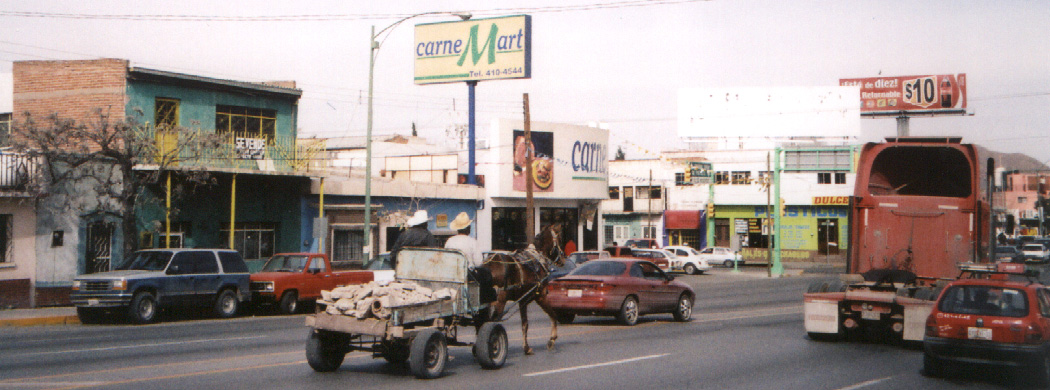
"All the same, there are times when I am bewildered by the contemporary, auto-oriented landscape."
"All in all, for one who is unskilled, and poorly educated and young, there is no better way of making money than having a car."
"I mean someone who drives for pay, and the relationship between such a person and the car or truck he or she drives is much more complex and much more intimate than anything most of us know."
167
| Summary | Chapters | Analysis | Themes | Vocabulary | Question | Observations |
13, Truck City
"The rich and sporting element in American society adopted the automobile because of the mobile and adventurous way of life it fostered."
173

14, Roads Belong in the Landscape
Which came first the house or the road leading to the house?
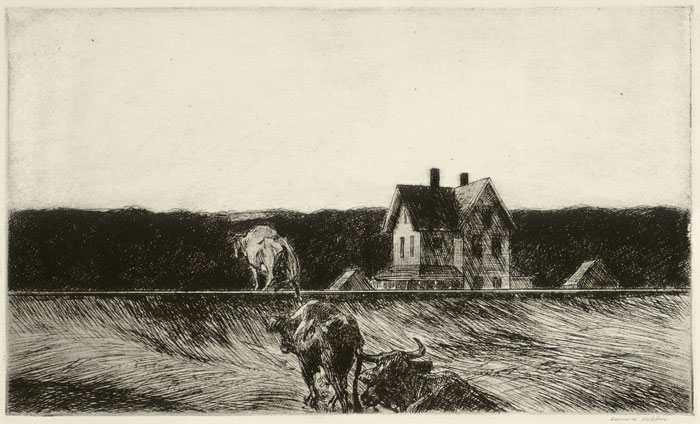
189
| Summary | Chapters | Analysis | Themes | Vocabulary | Question | Observations |
Contrast Jackson with Terry Tempest Williams
Contents | Summary | Chapters | Analysis | Themes | Vocabulary | Questions | Observations | Notes
Arnold Pacey | Lawrence G. Durrell | D. H. Lawrence | Carroll Pursell | Van der Ryn | Marshes of the Ocean Shore